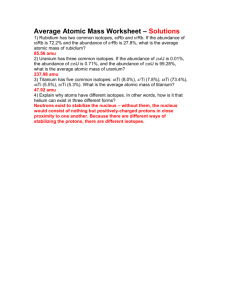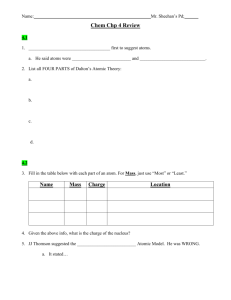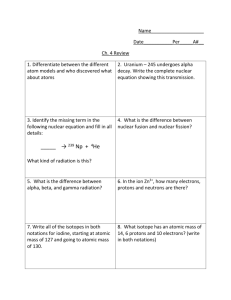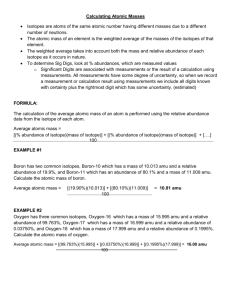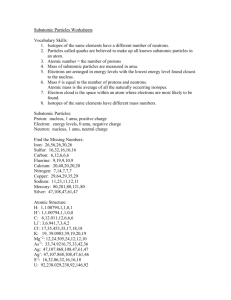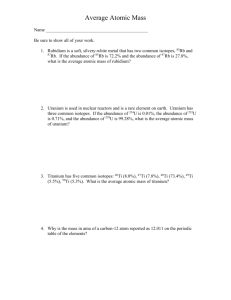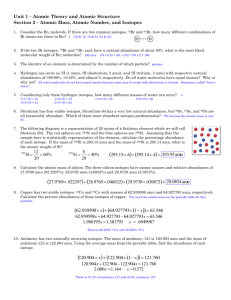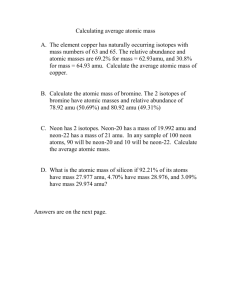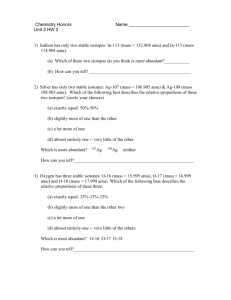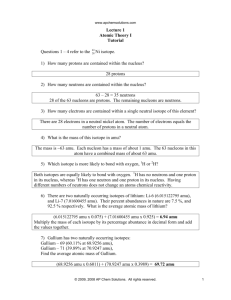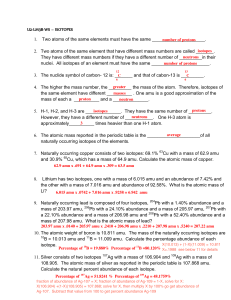Atomic Mass, Atomic Number, and Isotopes
advertisement
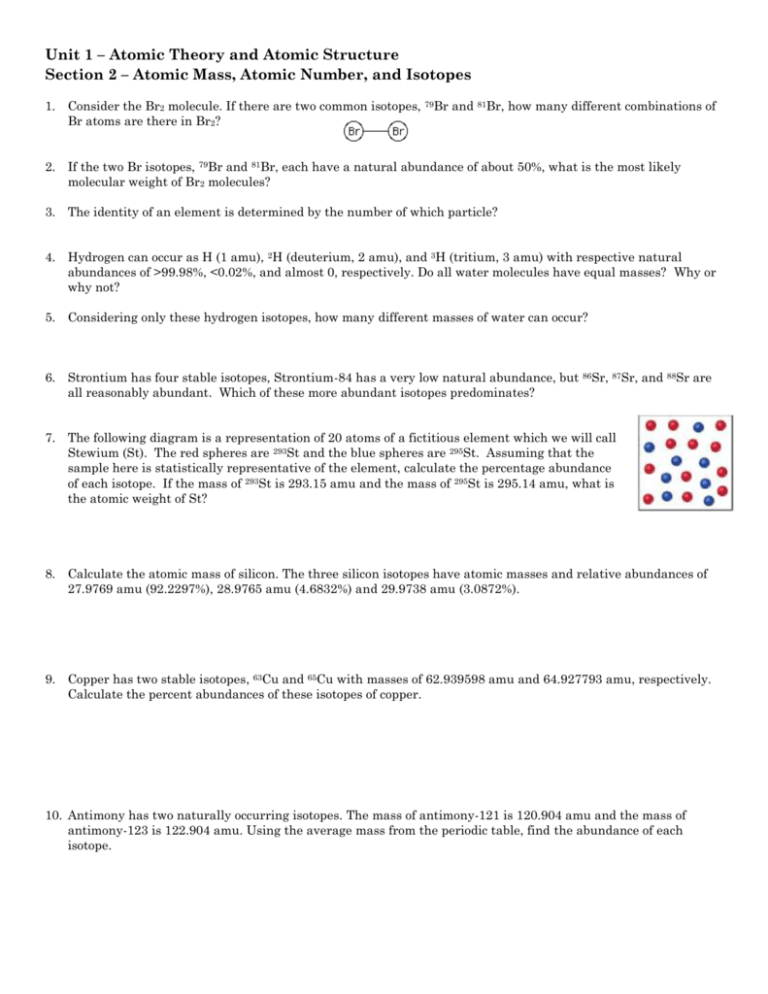
Unit 1 – Atomic Theory and Atomic Structure Section 2 – Atomic Mass, Atomic Number, and Isotopes 1. Consider the Br2 molecule. If there are two common isotopes, Br atoms are there in Br2? 79Br and 81Br, how many different combinations of 2. If the two Br isotopes, 79Br and 81Br, each have a natural abundance of about 50%, what is the most likely molecular weight of Br2 molecules? 3. The identity of an element is determined by the number of which particle? 4. Hydrogen can occur as H (1 amu), 2H (deuterium, 2 amu), and 3H (tritium, 3 amu) with respective natural abundances of >99.98%, <0.02%, and almost 0, respectively. Do all water molecules have equal masses? Why or why not? 5. Considering only these hydrogen isotopes, how many different masses of water can occur? 6. Strontium has four stable isotopes, Strontium-84 has a very low natural abundance, but 86Sr, 87Sr, and 88Sr are all reasonably abundant. Which of these more abundant isotopes predominates? 7. The following diagram is a representation of 20 atoms of a fictitious element which we will call Stewium (St). The red spheres are 293St and the blue spheres are 295St. Assuming that the sample here is statistically representative of the element, calculate the percentage abundance of each isotope. If the mass of 293St is 293.15 amu and the mass of 295St is 295.14 amu, what is the atomic weight of St? 8. Calculate the atomic mass of silicon. The three silicon isotopes have atomic masses and relative abundances of 27.9769 amu (92.2297%), 28.9765 amu (4.6832%) and 29.9738 amu (3.0872%). 9. Copper has two stable isotopes, 63Cu and 65Cu with masses of 62.939598 amu and 64.927793 amu, respectively. Calculate the percent abundances of these isotopes of copper. 10. Antimony has two naturally occurring isotopes. The mass of antimony-121 is 120.904 amu and the mass of antimony-123 is 122.904 amu. Using the average mass from the periodic table, find the abundance of each isotope.
